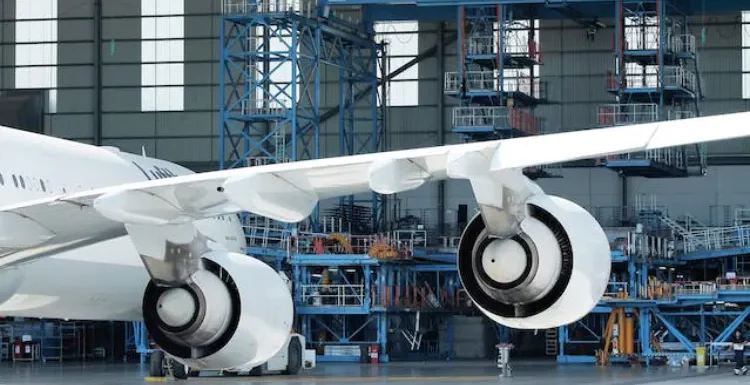
Routine maintenance, repairs, and ground operations are essential aspects of aviation. They ensure the safety, efficiency, and reliability of aircraft operations. From performing scheduled inspections and preventative maintenance to addressing unexpected repairs and managing ground operations, aviation professionals play a crucial role in keeping aircraft airworthy and operational. Here is an overview of routine maintenance, repairs, and common ground operations in aviation, exploring the various tasks, procedures, and challenges involved in maintaining and managing aircraft on the ground. From the tools used for maintenance to ground handling procedures, aviation maintenance and ground operations contribute to safe and efficient flight operations.
Routine Maintenance Procedures
Routine maintenance procedures are essential for ensuring the airworthiness and safety of aircraft. These procedures include scheduled inspections, lubrication, and component replacements as per manufacturer recommendations and regulatory requirements. Scheduled inspections, such as pre-flight checks, daily inspections, and routine maintenance checks, are conducted to detect and address potential issues before they escalate into more significant problems. Lubrication of aircraft components, including bearings, hinges, and control mechanisms, is essential for reducing friction, preventing wear, and ensuring smooth operation. Additionally, routine component replacements, such as filters, belts, and hoses, are performed based on predetermined intervals or operational hours to maintain optimal performance and reliability.
Repairs and Troubleshooting
Despite regular maintenance, aircraft may encounter unexpected issues that require immediate repairs and troubleshooting. Aviation maintenance technicians are trained to diagnose and rectify a wide range of mechanical, electrical, and avionics issues to ensure the safety and airworthiness of aircraft. Troubleshooting involves systematic analysis and testing of aircraft systems and components to identify the root cause of the problem. Once the issue is identified, maintenance technicians perform necessary repairs or replacements using specialized tools, equipment, and replacement parts. These repairs may range from simple fixes, such as replacing a faulty sensor or resetting a circuit breaker, to more complex tasks, such as repairing structural damage or overhauling engine components.
Tools Used for Maintenance
Aviation maintenance technicians rely on a wide range of specialized tools and equipment to perform maintenance and repairs on aircraft. These tools are designed to meet the unique requirements and challenges of aviation maintenance tasks, including precision, durability, and safety. Common tools used for aircraft maintenance include wrenches, screwdrivers, pliers, aircraft jacks, and socket sets for general maintenance tasks such as fastening, loosening, and tightening bolts, nuts, and screws. Additionally, specialized tools such as torque wrenches, micrometers, and calipers are used for precise measurements and torque settings to ensure proper installation and alignment of components.
Ground Handling and Operations
Ground handling and operations encompass a range of activities involved in managing aircraft on the ground, including parking, refueling, loading, and servicing. Ground handling personnel, including ramp agents, ground crew, and aircraft mechanics, work together to ensure efficient turnaround times between flights. This includes directing aircraft to designated parking positions, marshaling, and chocking aircraft to prevent movement. Refueling operations involve safely fueling the aircraft with the required amount of aviation fuel, following strict safety protocols and procedures. Additionally, ground crews oversee the loading and unloading of cargo and passengers, as well as servicing the aircraft with water, lavatory, and catering supplies.
Safety and Compliance
Safety is paramount in aviation maintenance and ground operations. Strict regulations and guidelines are in place to ensure compliance with safety standards and protocols. Aviation maintenance technicians and ground handling personnel undergo rigorous training and certification programs to acquire the necessary skills and knowledge for safe and efficient operations. Safety procedures, including hazard identification, risk assessment, and emergency response protocols, are followed to mitigate potential risks and ensure the safety of personnel and aircraft. Additionally, regulatory authorities such as the Federal Aviation Administration (FAA) and the International Civil Aviation Organization (ICAO) oversee compliance with safety regulations and conduct audits and inspections to ensure adherence to standards.
Final Thoughts
Routine maintenance, repairs, and ground operations are vital components of aviation that contribute to the safety, efficiency, and reliability of aircraft operations. From performing scheduled inspections and preventative maintenance to addressing unexpected repairs and managing ground handling procedures, aviation professionals play a crucial role in maintaining and managing aircraft on the ground. By adhering to strict safety protocols, utilizing specialized tools and equipment, and complying with regulatory requirements, aviation maintenance technicians and ground handling personnel ensure the airworthiness and safety of aircraft. This contributes to safe and efficient flight operations. As technology continues to advance and regulations evolve, the importance of routine maintenance, repairs, and ground operations in aviation remains critical for the continued safety and success of the industry.
